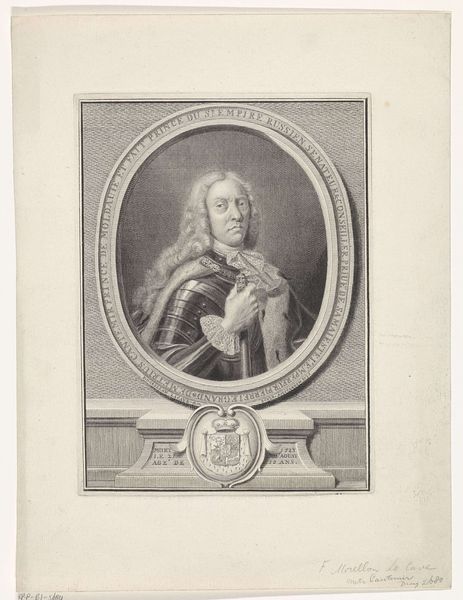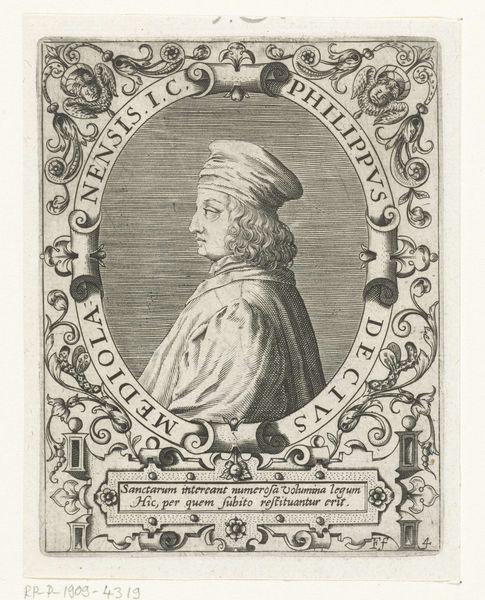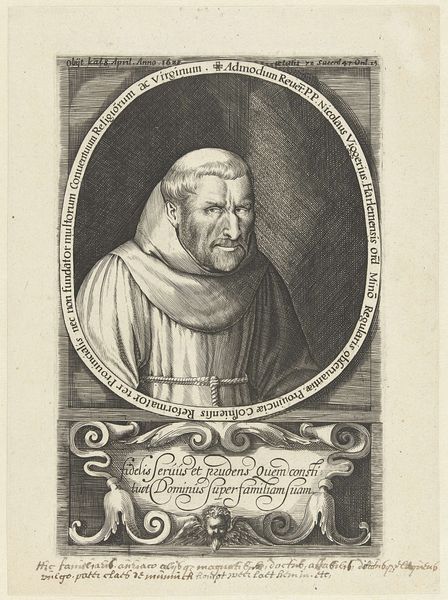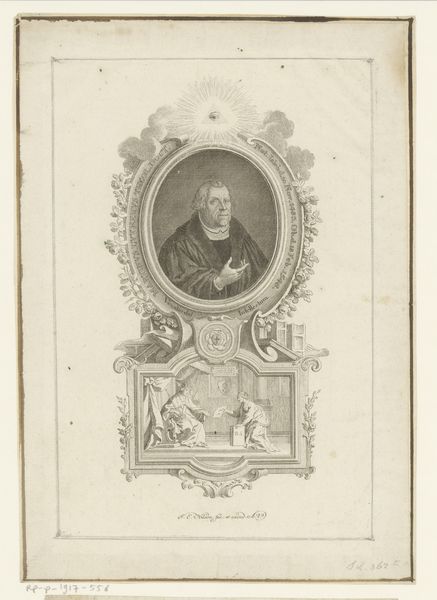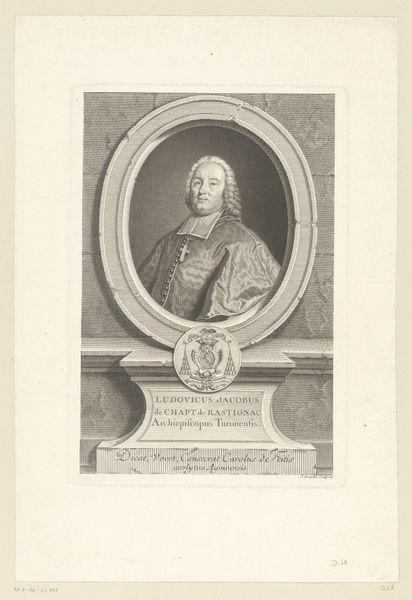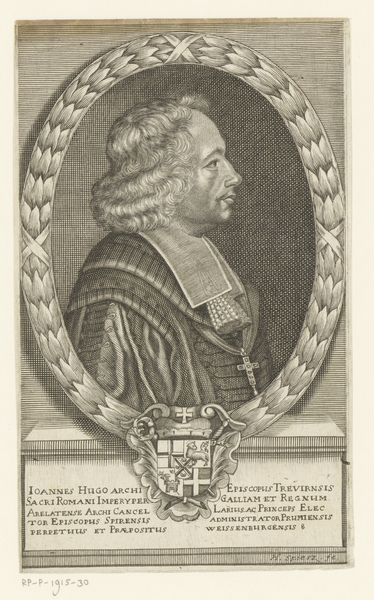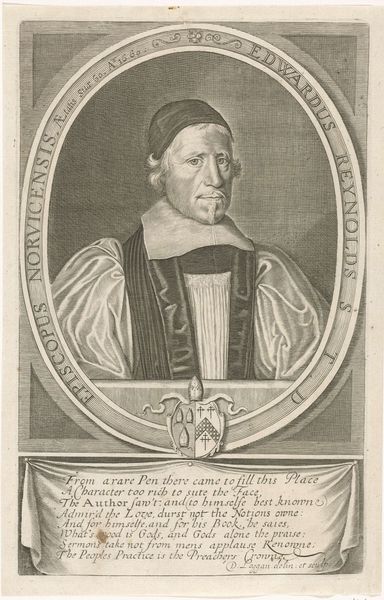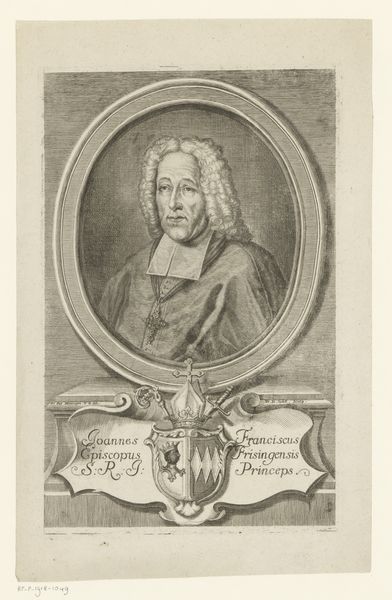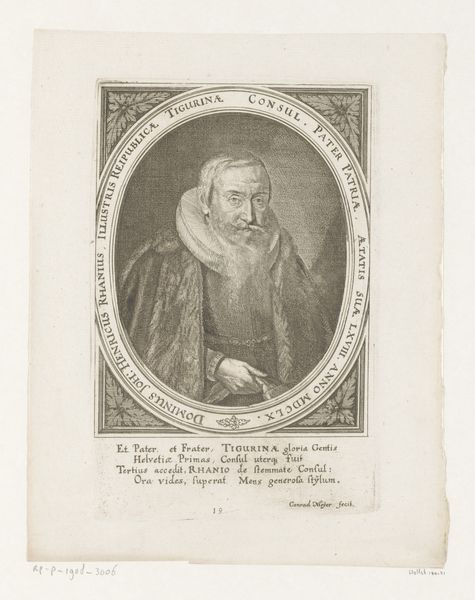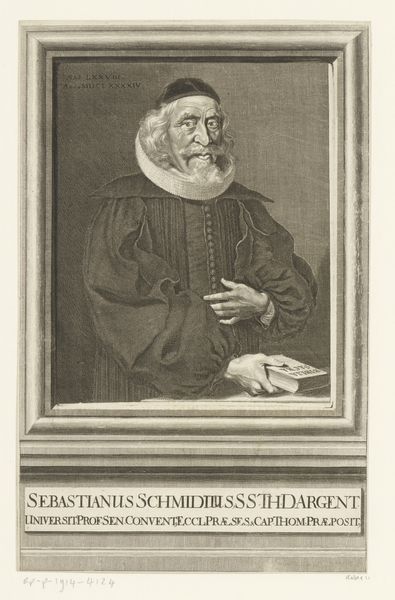
print, engraving
#
portrait
#
baroque
# print
#
old engraving style
#
history-painting
#
engraving
Dimensions: height 230 mm, width 168 mm
Copyright: Rijks Museum: Open Domain
Giovanni Battista Bonacina made this portrait of Laurengo Isimbardi using engraving, a printmaking technique that demands precision and control. The process begins by incising an image onto a metal plate, typically copper, using a tool called a burin. The depth and width of these lines directly influence the darkness of the printed image, which, here, captures Isimbardi’s likeness with striking detail, from the furrows on his brow to the luxurious fur draped over his shoulders. The act of engraving is labor-intensive, requiring both technical skill and artistic vision. Consider the thousands of tiny cuts needed to create the textures and shading that define the image. Each line speaks to the engraver's patience, as well as his ability to translate an image into a language of lines and dots. The social context here is clear: this print served to disseminate Isimbardi’s image, reinforcing his status through carefully crafted material representation. By focusing on the materiality and making of this print, we recognize the value of skilled labor and how it contributes to the work’s cultural significance, blurring the lines between craft and fine art.
Comments
No comments
Be the first to comment and join the conversation on the ultimate creative platform.
